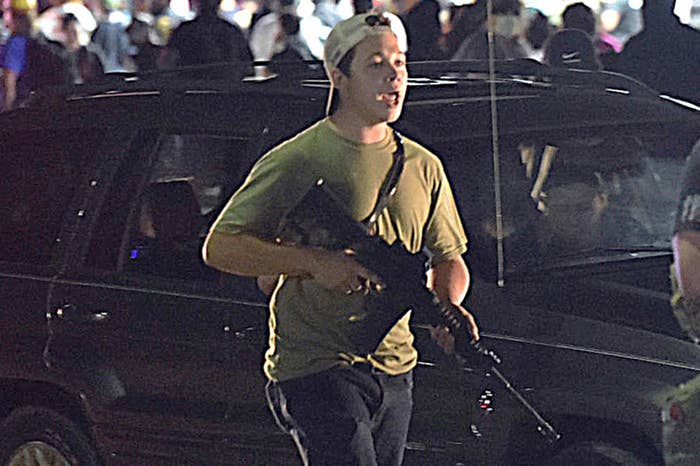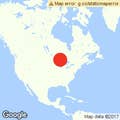
KENOSHA, Wisconsin — Kyle Rittenhouse was found not guilty of all charges against him on Friday after he testified he was acting in self-defense when he fatally shot two people, wounded one, and attempted to shoot two others during a protest against police brutality in Kenosha, Wisconsin, in August 2020.
The jury acquitted Rittenhouse of first-degree reckless homicide with the use of a dangerous weapon, first-degree intentional homicide with the use of a dangerous weapon (Wisconsin’s murder count), attempted first-degree intentional homicide with the use of a dangerous weapon, and two counts of recklessly endangering safety with the use of a dangerous weapon.
Although Rittenhouse initially faced seven charges, the judge on Monday dismissed a misdemeanor charge of possession of a dangerous weapon by a person under 18 after the defense successfully argued that a technicality concerning the length of a gun used by a minor in Wisconsin’s statute cleared him. Earlier in the trial, the judge dismissed a curfew violation charge against Rittenhouse, ruling that the state had not presented sufficient evidence.
Almost immediately after his arrest, Rittenhouse was lionized in some right-wing circles where vigilantes were celebrated for pushing back against the racial justice protests that spread across the country during the summer of 2020. Throughout the trial, right-wing figures like the McCloskeys, who were charged for unlawful use of a weapon after they were filmed pointing guns at Black Lives Matter protesters in Missouri, backed Rittenhouse and took photos with supporters outside the courthouse.
The highly anticipated verdict came after about 26 hours of deliberation following a two-week trial that focused on a single question: Was Rittenhouse acting in self-defense when he fatally shot two people and wounded another during civil unrest?
The prosecution sought to portray Rittenhouse as a vigilante and instigator who came to the city armed in anticipation of and seeking violence. The defense maintained that the then-17-year-old wanted to defend businesses and people from rioters and only fired his weapon because he had an imminent fear for his life.
“He wishes none of this would have ever happened but as he said … he did not start this,” Rittenhouse’s attorney Mark Richards told reporters shortly after the verdict. “We’re thankful in more ways than one that the jury finally got to hear the true story.”
Civil unrest erupted in Kenosha on Aug. 23, 2020, after a police officer shot a 29-year-old Black man named Jacob Blake in the back. Blake had been walking toward his car, within which were three of his children, who witnessed the shooting. He was left paralyzed from the waist down as a result of his injuries. (State prosecutors declined to file charges against the officer who shot Blake after evidence showed that he was armed with a knife; the officer also did not face disciplinary action.)
After two nights of violent protests that saw arrests, property damage, and looting, Rittenhouse, armed with an AR-15-style rifle and a medical kit, traveled to Kenosha from his home in nearby Antioch, Illinois, on Aug. 25. In an interview that evening, he told Daily Caller reporter Richard McGinnis — who testified at trial — that he came to the protests to protect private property and act as a medic, falsely describing himself as an EMT. Later that night, Rittenhouse shot and killed protesters Joseph Rosenbaum, 36, and Anthony Huber, 26, and wounded Gaige Grosskreutz, 27.
Bystander and drone video footage captured the shootings and the events leading up to them, and lawyers for both the prosecution and defense relied heavily on these audiovisual elements as they made their cases. The lawyers regularly went frame by frame as they questioned witnesses and made opening and closing arguments.
One of these videos shows that shortly before midnight, Rosenbaum chased Rittenhouse across the parking lot of a car dealership and threw a plastic bag at him. In another, filmed from a drone, Rosenbaum catches up to Rittenhouse and lunges toward him. Then, in the footage, Rittenhouse fires four shots at close range into Rosenbaum’s body, killing him. Additional videos show Rittenhouse fleeing the scene and being chased by a crowd. He is shown falling to the ground, at which point Huber approaches Rittenhouse, swinging a skateboard toward Rittenhouse’s head in an apparent attempt to disarm him. Rittenhouse then fatally shoots Huber. Grosskreutz is then shown approaching Rittenhouse with a pistol in his hand; Rittenhouse shoots him, wounding his arm.

Much of the witness testimony, including for the prosecution, supported the defense’s claims that Rittenhouse acted in self-defense. McGinnis told the court that Rosenbaum yelled “fuck you” and was attempting to take the gun from Rittenhouse when he was shot. Grosskreutz testified that he was pointing his weapon at the teenager when he was wounded, although he claimed he did not intend to fire.
Rittenhouse took the stand in his own defense on last week, telling the court that he “didn’t do anything wrong.”
“I didn't intend to kill them,” he testified. “I intended to stop the people who were attacking me." Rittenhouse said that Rosenbaum had threatened to kill him earlier in the evening of Aug. 25, and he feared for his life when Rosenbaum began chasing him and didn’t fire until he attempted to take his weapon. Rittenhouse told the court that he shot Huber because Huber was attempting to take his weapon while he was on the ground, after Huber had hit him in the head twice with a skateboard. He testified that he perceived Grosskreutz to be a threat to his life because he was pointing a pistol at him.
In his closing arguments, Kenosha County Circuit Court Assistant District Attorney Thomas Binger asked the jury to consider Rittenhouse’s “true motivations” for being in Kenosha on that night.
“Did he sincerely care about [private property]? Was he genuinely interested in helping people? He ran around with an AR-15 all night and lied about being an EMT. He's not there to support Black Lives Matter or Jacob Blake. Why was he there?"
Binger also rejected Rittenhouse’s claim that he acted in self-defense because he brought a weapon to a volatile environment. “You lose the right to self-defense when you're the one who brought the gun. When you're the one creating the danger."
Rittenhouse’s legal team attacked the prosecution in their closing statement, accusing Binger of “lying” and “misrepresenting” the events of Aug. 25, 2020.
“They have the burden of proof. We don't,” Richards said of the prosecution. “They want it to be that Kyle was out there doing something improper. Kyle was a 17-year-old kid trying to help this community.”
The pool of 18 potential jurors who sat through the trial did not know which 12 among them would be deciding Rittenhouse’s fate until Tuesday morning when their names were randomly selected in a lottery. Twenty potential jurors were initially selected — 12 to be jurors and 8 to be alternates — but two were dismissed during the course of the trial. (One for pregnancy complications, another for making a “joke” about the shooting of Jacob Blake.) According to reporters in the courtroom, the final makeup of the jury was 7 women and 5 men. One of the men is Hispanic; the other 11 are white.
VIDEO: Kyle Rittenhouse breaks down in the courtroom as the jury reads the final not guilty verdict. Rittenhouse was acquitted of all charges.
The parents of Anthony Huber, one of the two men killed by Rittenhouse, lamented the verdict reached by the jury Friday, saying it brought “no justice today” for Huber, or the two other men shot by Rittenhouse.
“Today’s verdict means there is no accountability for the person who murdered our son,” the family said in a statement. “It sends the unacceptable message that armed civilians can show up in any town, incite violence, and then use the danger they have created to justify shooting people in the street.”
The family vehemently disagreed that Rittenhouse had acted in self-defense.
“No reasonable person viewing all of the evidence could conclude that Mr. Rittenhouse acted in self-defense,” the parents said.
The family also criticized the Kenosha police, who they said contributed to the violence by encouraging armed members of a self-described militia group into the streets and allegedly pushing protesters to where the militia members waited for them.
Huber was the second person killed by Rittenhouse — he hit the teenager with a skateboard and was attempting to disarm him when he was fatally shot.
When asked by a BuzzFeed News reporter whether Rittenhouse had considered the impact that his trial has had on the families of his victims, David Hancock, a spokesperson for Rittenhouse and his family, said "don't say victims." During the trial, attorneys were not allowed to refer to Rosenbaum, Huber, and Grosskreutz due to a ruling by Kenosha County Circuit Court Judge Bruce Schroeder, who said the term was "loaded."
"Kyle and the family ... very, very much feel the reality and the weight of what happened here," Hancock said. "That’s not lost on them. And it never has been."
He and Richards told reporters that Rittenhouse doesn't sleep at night and has been diagnosed with PTSD as a result of the events from that night.
"There are no winners and there are — two people did lose their lives," Hancock said. "And nobody is spiking the football here."
Richards told reporters that he doesn’t think Rittenhouse will continue to live in the area, saying “it’s too dangerous.”
“He has to get on with his life the best he can,” Richards said, noting later that he aspires to be a nurse. “I think eventually some anonymity will come back to it.”
Stephanie K. Baer contributed reporting to this story.



